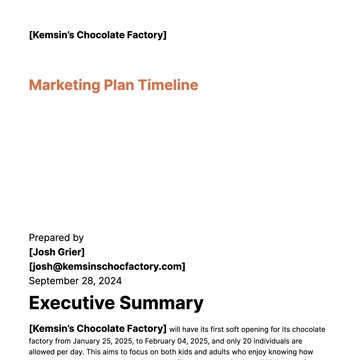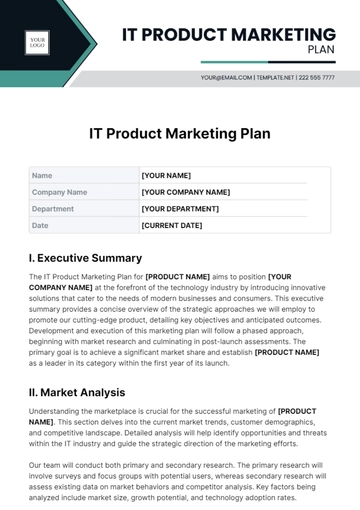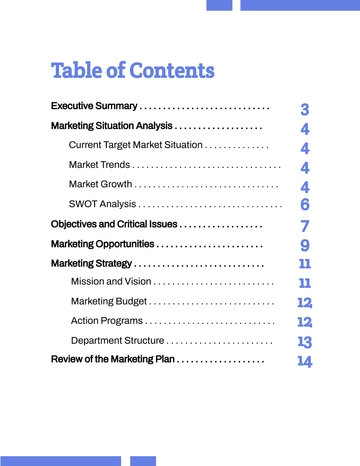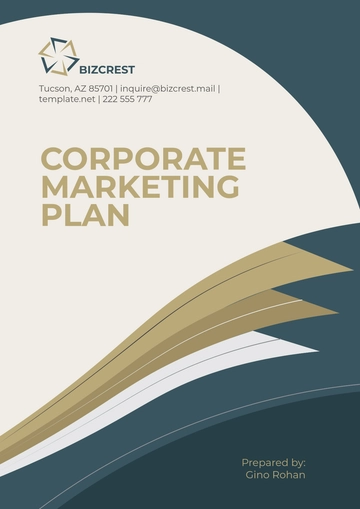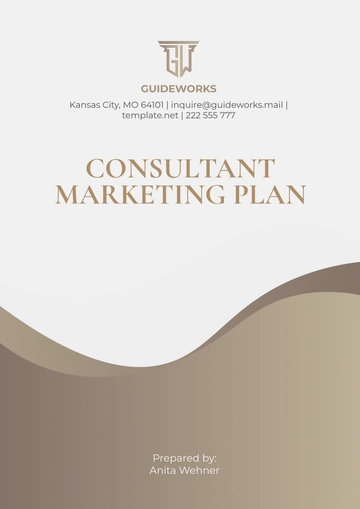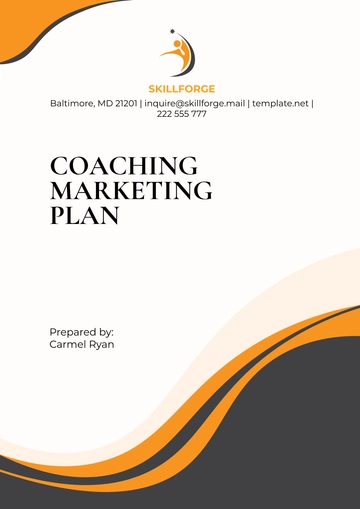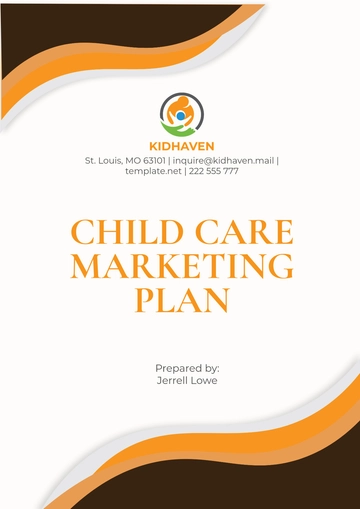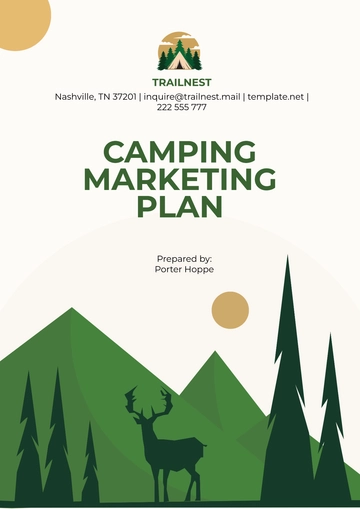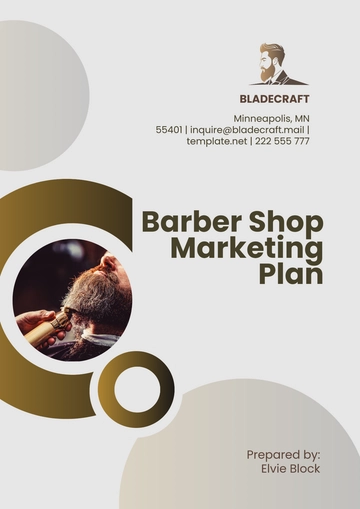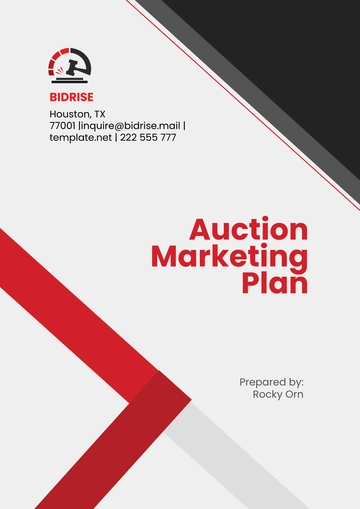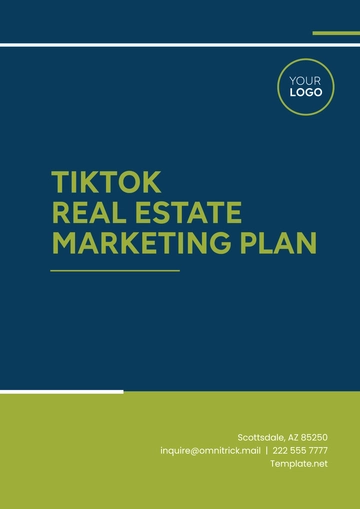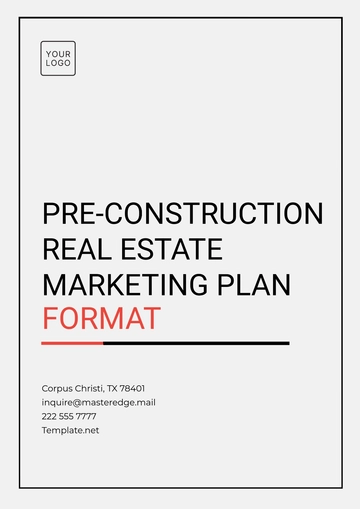Free Restaurant Strategic Marketing Plan
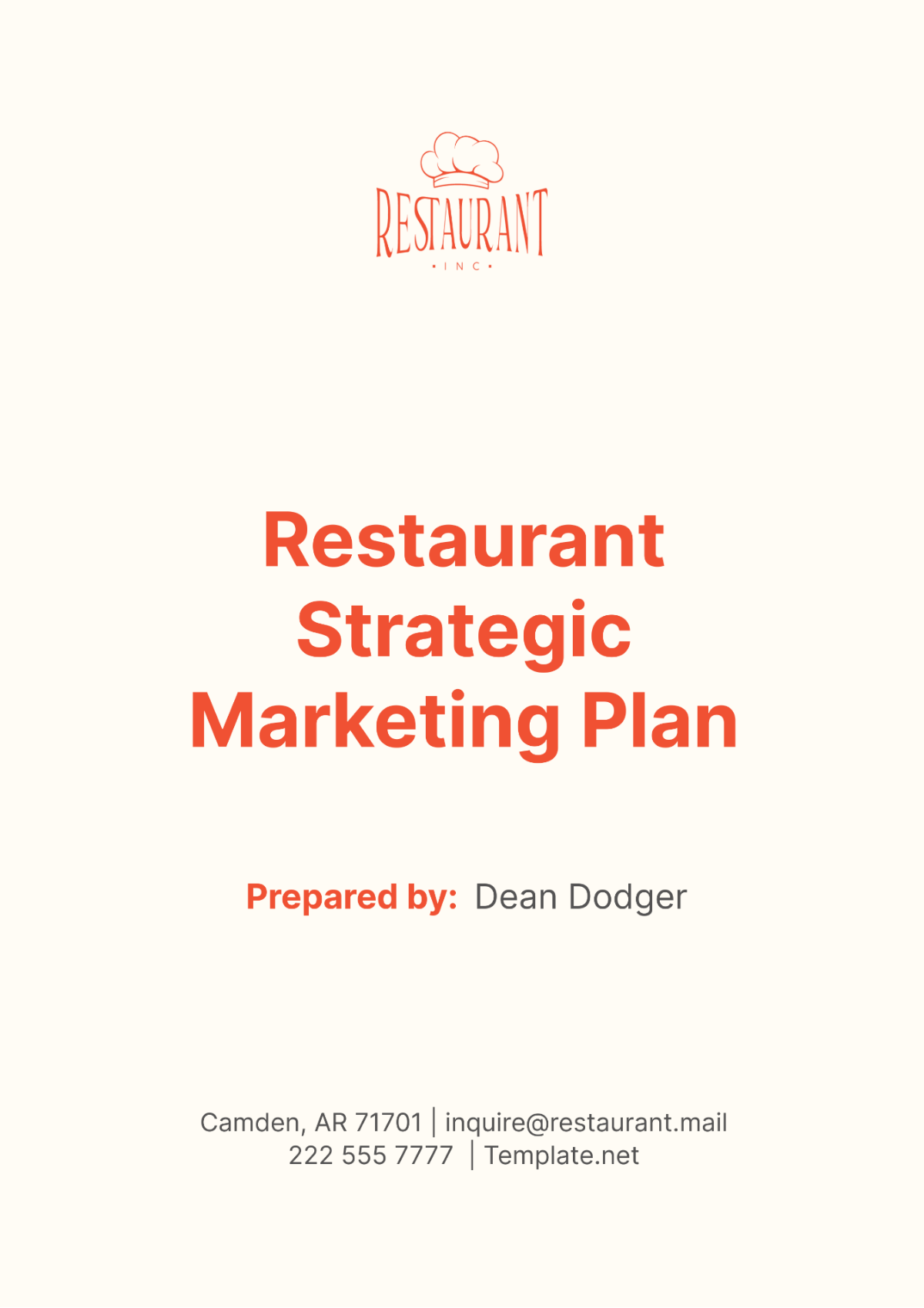
I. Executive Summary
The purpose of this strategic marketing plan is to outline the comprehensive strategy for our restaurant, [Your Company Name], to capture a significant market share in the food and beverage industry. This plan serves as a roadmap for our marketing efforts, detailing our goals, target audience, market analysis, marketing strategies, budget, timeline, and evaluation metrics. The insights and strategies outlined in this plan are based on a thorough analysis of our current market position, audience demographics, and industry trends.
In the highly competitive food and beverage industry, a well-crafted marketing strategy is crucial for success. Our strategy is designed to enhance our brand visibility, foster customer loyalty, and drive business growth. By focusing on key areas such as customer retention, brand awareness, and revenue growth, we aim to create a strong market presence and achieve sustainable growth.
Overall, this strategic marketing plan with a total estimated budget of $14,000 provides a clear direction for our marketing efforts. It highlights the importance of understanding our target audience, leveraging our strengths, addressing our weaknesses, and capitalizing on opportunities in the market. By implementing this plan, we are confident that [Your Company Name] will be well-positioned to achieve its marketing goals and objectives.
II. Marketing Goals & Objectives
The marketing goals and objectives for our restaurant, [Your Company Name], are designed to guide our marketing efforts and provide a clear direction for our team. These are the following:
A. Increase Customer Retention
One of our primary objectives is to increase customer retention by 15% within the next year. Retaining customers is just as important as acquiring new ones. By focusing on customer satisfaction and loyalty programs, we aim to turn our one-time patrons into regulars.
B. Enhance Brand Awareness
We aim to enhance brand awareness through social media campaigns and local community involvement. By consistently communicating our brand values and what we stand for, we hope to create a strong brand image that resonates with our target audience.
C. Boost Revenue
Our ultimate financial goal is to boost revenue by 20% through promotional offers and events. By offering value to our customers and creating experiences that exceed their expectations, we aim to drive sales and improve our bottom line.
III. Target Audience
Identifying our target audience is a crucial step in our marketing plan. It allows us to understand who our customers are, what they value, and how we can meet their needs. Our primary audience includes:
A. Local Residents
Local residents form the backbone of our customer base. This group includes families looking for a comfortable dining experience, young professionals seeking quick and healthy meals, and retirees who appreciate our relaxed atmosphere and friendly service. We aim to cater to their diverse needs by offering a menu that has something for everyone.
B. Tourists
Tourists present a unique opportunity for us to showcase our local cuisine and provide a memorable dining experience. This group includes travelers exploring our city and food enthusiasts seeking new culinary experiences. We aim to attract them by offering dishes that highlight local flavors and ingredients, and by providing service that makes them feel welcomed and valued.
C. Corporate Clients
Corporate clients are an important part of our audience. This group includes business executives looking for a suitable venue for business lunches or dinners, and office workers seeking quick and convenient meal options. We cater to their needs by offering efficient service, a professional atmosphere, and a menu that caters to a variety of dietary preferences.
IV. Market Analysis
A thorough market analysis is a crucial component of our strategic marketing plan for [Your Company Name]. It provides valuable insights into our target market segments, their demographics, and their specific needs and preferences. The following table presents an overview of the findings based on the analysis:
Market Segment | Target Demographics | Needs/Preferences |
|---|---|---|
Local Residents | Families, Young Professionals, Retirees | Family-friendly atmosphere, diverse menu, affordability |
Tourists | Travelers, Food Enthusiasts | Local cuisine, cultural experience, quality service |
Corporate Clients | Business Executives, Office Workers | Quick service, healthy options, convenience |
A. Local Residents
Local residents form a significant part of our customer base. This group includes families, young professionals, and retirees. They value a family-friendly atmosphere, a diverse menu that caters to different tastes, and affordability. As a restaurant, we need to ensure that our offerings and ambiance cater to these needs. For instance, we could offer a special family meal deal or introduce a diverse menu that caters to different dietary preferences and tastes.
B. Tourists
Tourists, including travelers and food enthusiasts, are another key segment of our market. They are interested in local cuisine and cultural experiences, and they value quality service. To cater to this segment, we could highlight local and unique dishes on our menu and provide a dining experience that reflects the local culture. Additionally, ensuring that our staff provides excellent service will enhance the overall dining experience for tourists.
C. Corporate Clients
Corporate clients, including business executives and office workers, are an important part of our market. They value quick service, healthy options, and convenience. To cater to this segment, we could offer a special lunch menu with quick and healthy options. Additionally, providing services like online ordering and delivery could add to the convenience and attract more corporate clients.
Understanding our market segments and their needs and preferences is crucial for tailoring our offerings and marketing strategies. It allows us to target our marketing efforts effectively and meet the specific needs of each segment, thereby enhancing customer satisfaction and loyalty.
In a summary, this market analysis forms the foundation of our marketing strategy. It provides valuable insights that guide our decision-making and strategy formulation. By understanding our market segments and their specific needs and preferences, we can tailor our offerings and marketing efforts to meet these needs, thereby enhancing our market position and driving growth for [Your Company Name].
V. SWOT Analysis
Our SWOT analysis provides a clear picture of our current situation and helps us strategize effectively. The following table presents our SWOT analysis:
Strengths | Weaknesses |
|---|---|
|
|
Opportunities | Threats |
|
|
A. Strengths
Our strengths lie in our high-quality food, exceptional service, and prime location. These factors set us apart from our competitors and attract customers to our restaurant. High-quality food is a testament to our commitment to excellence, while exceptional service enhances the dining experience and builds customer loyalty. Our prime location makes us easily accessible and increases our visibility.
B. Weaknesses
Our weaknesses include limited seating capacity and seasonal menu limitations. Limited seating capacity can restrict the number of customers we can serve at a time, potentially leading to lost sales during peak dining hours. Seasonal menu limitations may restrict our ability to offer a diverse menu throughout the year, which could impact customer satisfaction.
C. Opportunities
We have opportunities for expansion and partnerships. Expansion prospects could include opening new branches in other locations or extending our existing premises to accommodate more customers. Partnership opportunities could involve collaborating with local suppliers or hosting events with other businesses to increase our visibility and reach a larger audience.
D. Threats
We face threats from economic downturns and rising competition. Economic downturns can reduce consumer spending on dining out, impacting our sales. Rising competition in the restaurant industry can lead to a decrease in market share if we do not continuously innovate and improve our offerings.
Understanding our strengths and weaknesses helps us leverage our advantages and address our shortcomings. Recognizing our opportunities allows us to plan for growth and expansion, while being aware of threats enables us to prepare for challenges and mitigate risks. In conclusion, a SWOT analysis is a valuable tool in our strategic marketing plan, guiding us in making informed decisions and developing effective strategies for [Your Company Name].
VI. Marketing Strategies
Our marketing strategies are designed to reach our target audience effectively and achieve our marketing goals. They are based on our understanding of our audience’s needs and preferences, as well as the insights gained from our market analysis and SWOT analysis. Here are the key components of our marketing strategies:
A. Digital Marketing
Digital marketing is a powerful tool for reaching a wide audience and engaging with them effectively. Our digital marketing strategy includes:
Utilizing social media platforms: Platforms such as Instagram, Facebook, and Twitter allow us to engage with our audience, share updates, and promote our offerings. We plan to create engaging content, respond to comments, and run targeted ad campaigns to increase our visibility and engagement on these platforms.
Optimizing our website: Our website is often the first point of contact for potential customers. We plan to optimize our website to ensure it is user-friendly, visually appealing, and provides all the necessary information about our restaurant.
Implementing SEO strategies: Search Engine Optimization (SEO) can increase our visibility on search engines, making it easier for potential customers to find us. We plan to implement SEO strategies such as using relevant keywords, optimizing page load speed, and creating quality content.
B. Email Marketing
Email marketing allows us to stay connected with our customers and keep them informed about what’s happening at our restaurant. Our email marketing strategy includes:
Developing a monthly newsletter: A monthly newsletter can update our subscribers about special offers, events, and new menu items. We plan to design our newsletter to be informative, engaging, and visually appealing.
Creating personalized email campaigns: Personalized email campaigns can enhance customer engagement and loyalty. We plan to segment our email list and create personalized campaigns based on factors such as customer preferences and previous interactions with our restaurant.
Implementing an email automation system: An email automation system can help us send timely and relevant emails to our subscribers. We plan to implement an email automation system to streamline our email marketing process and increase its effectiveness.
C. Content Marketing
Content marketing involves creating and sharing valuable content to attract and engage our audience. Our content marketing strategy includes:
Creating blog posts: Blog posts can provide valuable information to our audience and position us as an authority in our industry. We plan to create blog posts on topics such as our culinary expertise, behind-the-scenes content, and tips for a great dining experience.
Producing videos: Videos are highly engaging and can provide a more immersive experience for our audience. We plan to produce videos showcasing our culinary process, customer testimonials, and special events at our restaurant.
Sharing user-generated content: User-generated content, such as customer reviews and photos, can build trust and encourage more interaction. We plan to share user-generated content on our social media platforms and website to enhance community engagement.
VII. Budget
Allocating a budget for our marketing activities is crucial for ensuring that we have the necessary resources to implement our marketing strategies effectively. The following table provides a breakdown of our estimated budget for different marketing activities:
Activity | Cost |
|---|---|
Social Media Campaigns | $5,000 |
Email Marketing | $2,000 |
Content Creation | $3,000 |
Promotional Events | $4,000 |
Total | $14,000 |
A. Social Media Campaigns
We have allocated $5,000 for social media campaigns. This includes the cost of creating and running ads on platforms like Facebook, Instagram, and Twitter. Investing in social media campaigns can help us reach a larger audience, increase our brand visibility, and drive traffic to our website.
B. Email Marketing
We have allocated $2,000 for email marketing. This includes the cost of email marketing software and the creation of monthly newsletters. Email marketing allows us to stay connected with our customers, keep them informed about our latest offers and events, and drive repeat business.
C. Content Creation
We have allocated $3,000 for content creation. This includes the cost of creating blog posts and videos for our website and social media platforms. Quality content can engage our audience, provide value, and position us as an authority in our industry.
D. Promotional Events
We have allocated $4,000 for promotional events. This includes the cost of hosting events such as themed nights, special discounts, and seasonal events. Promotional events can attract new customers, engage our existing customers, and create a buzz around our restaurant.
Allocating a budget for our marketing activities ensures that we have the necessary resources to implement our strategies effectively. It also allows us to track our spending and measure the return on investment for each activity. By investing in key areas such as social media campaigns, email marketing, content creation, and promotional events, we aim to enhance our brand awareness, increase customer engagement, and drive growth for [Your Company Name].
VIII. Timeline
A well-defined timeline is crucial for the successful implementation of our marketing plan. It provides a clear schedule for our marketing activities and ensures that we stay on track with our goals. The following table provides an overview of our marketing timeline:
Quarter | Activities |
|---|---|
Q1 | Launch social media campaigns, initiate email marketing |
Q2 | Host a promotional event, increase blog content |
Q3 | Evaluate campaign performance, adjust strategies |
Q4 | Final assessment, prepare for the next year’s plan |
In the first quarter, we plan to launch our social media campaigns and initiate our email marketing efforts. This involves creating and posting engaging content on our social media platforms, running targeted ad campaigns, and sending out our first monthly newsletter. These activities aim to increase our brand visibility, engage our audience, and drive traffic to our website.
In the second quarter, we plan to host a promotional event and increase the amount of blog content on our website. The promotional event will serve as a platform to interact with our customers directly and showcase our offerings. Increasing blog content will provide valuable information to our customers and position us as an authority in the restaurant industry.
The third quarter will be dedicated to evaluating the performance of our campaigns and adjusting our strategies as needed. We will analyze key metrics such as engagement rate, customer acquisition cost, and return on investment to measure the effectiveness of our campaigns. Based on the analysis, we will adjust our strategies to maximize our marketing effectiveness.
In the fourth quarter, we will conduct a final assessment of our marketing efforts and begin preparing for the next year’s plan. The final assessment will provide insights into our overall marketing performance and identify areas for improvement. Preparing for the next year’s plan will involve setting new goals, identifying opportunities, and developing strategies based on the insights gained from the current year’s performance.
In a nutshell, a well-defined timeline not only provides a clear schedule for our marketing activities but also serves as a roadmap for achieving our marketing goals. By following this timeline, we can ensure that our marketing efforts are well-coordinated and focused on achieving maximum results. Furthermore, regular evaluation and adjustment of our strategies will ensure that our marketing efforts remain effective and aligned with our business goals.
IX. Evaluation & Metrics
Evaluation and metrics are integral to the success of our strategic marketing plan for [Your Company Name]. They provide us with a means to measure the effectiveness of our marketing efforts, and offer valuable insights that guide our decision-making process:
A. Key Performance Indicators
Key Performance Indicators (KPIs) are quantifiable measures used to evaluate the success of an organization, employee, etc., in meeting objectives for performance. For our restaurant, we will utilize the following KPIs:
Customer Satisfaction Surveys: These surveys will provide direct feedback from our customers about their dining experience and our service. This will help us understand what we are doing well and where we need to improve.
Social Media Engagement Metrics: These metrics, such as likes, shares, comments, and followers, will give us insights into how well our content is resonating with our audience. This will help us refine our content strategy to better engage our audience.
Sales Reports: Sales reports will provide concrete data on our revenue and help us measure the return on investment for our marketing activities. This will help us understand if our marketing efforts are translating into increased sales.
B. Data Analysis
Data analysis involves inspecting, cleaning, transforming, and modeling data with the goal of discovering useful information, suggesting conclusions, and supporting decision-making. For our restaurant, we will do the following:
Compare Actual Performance Against Goals: This involves comparing our actual performance against our marketing goals to see if we are on track. If not, we need to understand why and adjust our strategies accordingly.
Identify Trends: This involves looking at our data over time to identify trends. For example, if we notice that our sales are consistently higher on weekends, we might consider running special promotions during these times to further boost sales.
Understand the Impact of Marketing Activities: This involves understanding the impact of our marketing activities on our business performance. For example, if we run a social media campaign, we want to understand how this has affected our sales, customer acquisition, and brand awareness.
C. Strategy Adjustment
Strategy adjustment involves changing our marketing strategies based on the insights gained from our evaluation and metrics. For our restaurant, we will:
Refine Content Strategy: If our social media engagement metrics indicate that certain types of content are more engaging than others, we will refine our content strategy to produce more of this type of content.
Reallocate Budget: If our sales reports indicate that certain marketing activities are providing a higher return on investment, we may consider reallocating our budget to focus more on these activities.
Change Customer Engagement Approach: If our customer satisfaction surveys indicate that customers are not satisfied with certain aspects of our service, we will change our customer engagement approach to address these issues.
X. Conclusion
In conclusion, this strategic marketing plan serves as a comprehensive guide for our restaurant’s marketing efforts. It outlines our goals, target audience, marketing strategies, budget, and timeline, providing a clear roadmap for our team. By implementing this plan, we aim to enhance our brand awareness, increase customer retention, and boost our revenue.
We understand that the food and beverage industry is dynamic and competitive. Therefore, we are committed to continuously monitoring our performance, learning from our experiences, and adapting our strategies as needed. We believe that with this strategic marketing plan, [Your Company Name] is well-positioned to achieve its marketing goals and objectives.
- 100% Customizable, free editor
- Access 1 Million+ Templates, photo’s & graphics
- Download or share as a template
- Click and replace photos, graphics, text, backgrounds
- Resize, crop, AI write & more
- Access advanced editor
Develop effective marketing strategies with the Restaurant Strategic Marketing Plan Template available on Template.net! This editable template provides a structured approach to marketing planning. Customize the plan to align with your restaurant’s goals using the customizable features. The AI Editor Tool ensures that your marketing plan is comprehensive and tailored!

